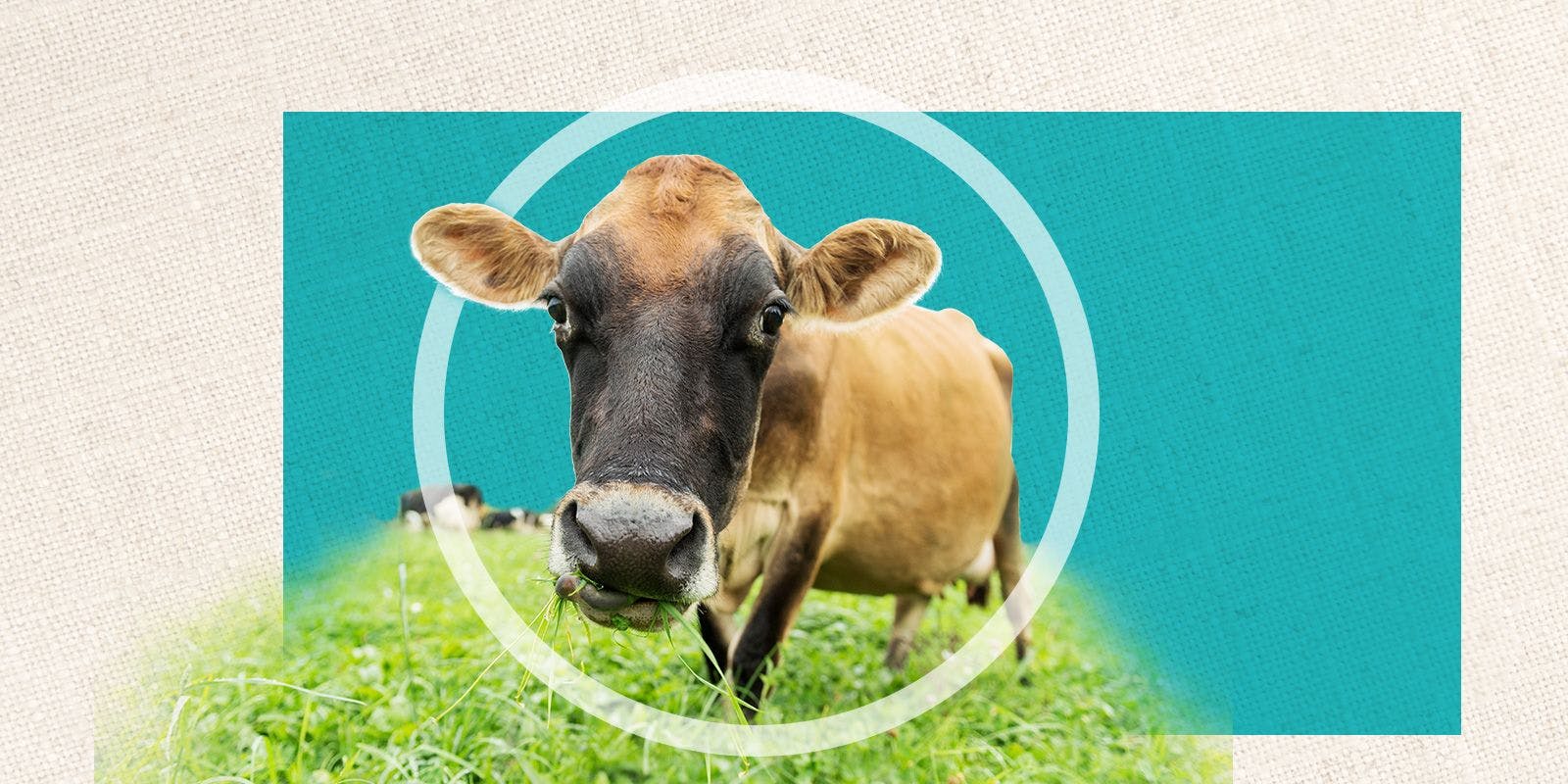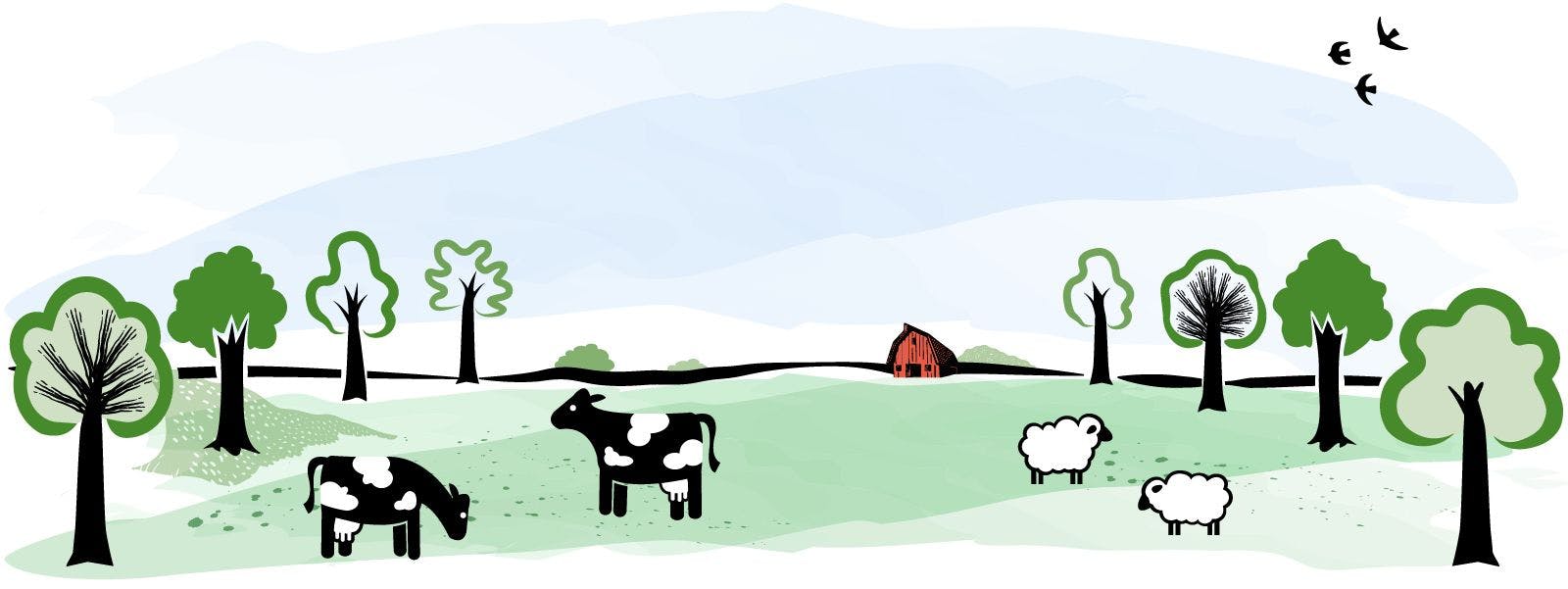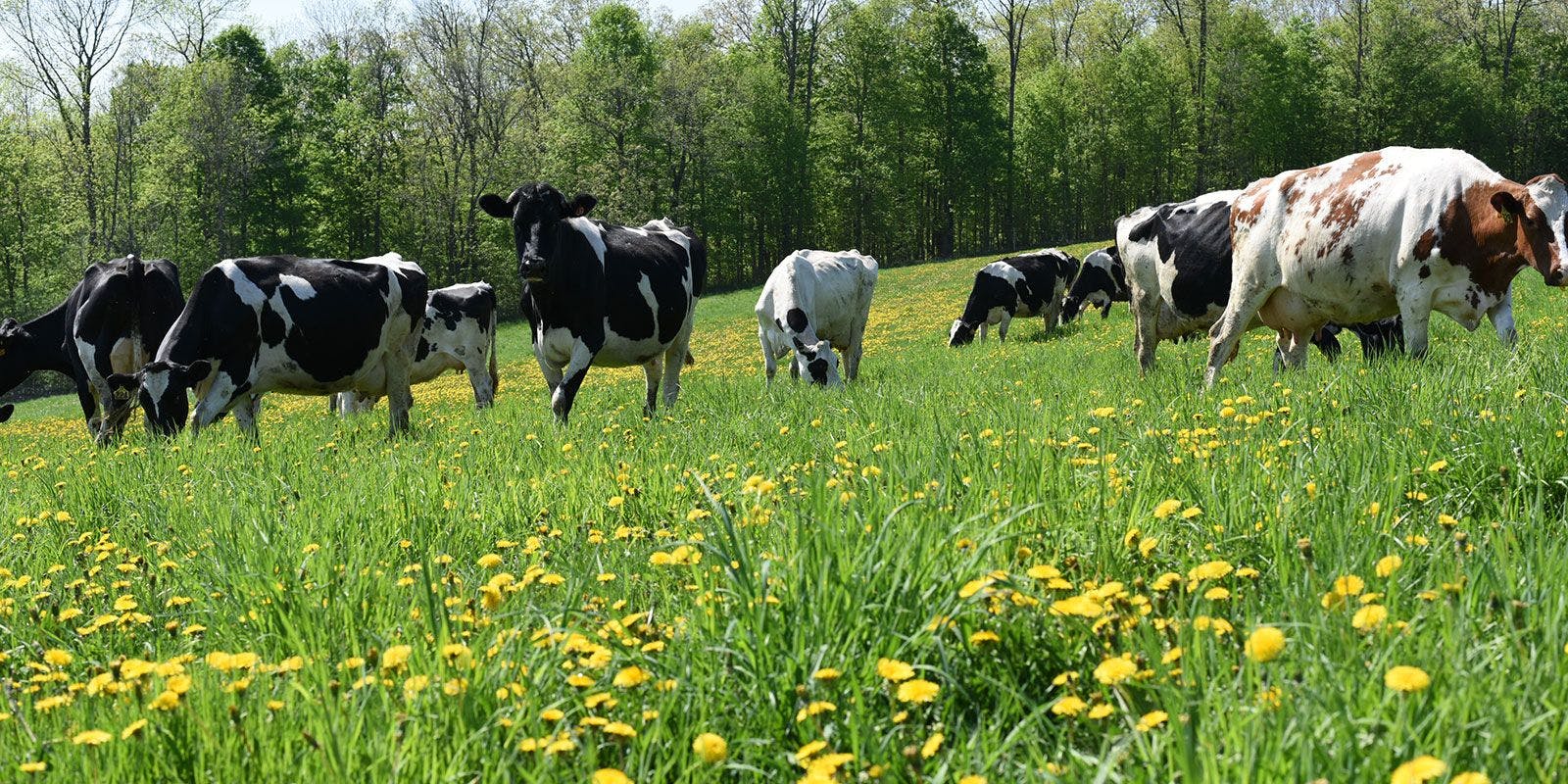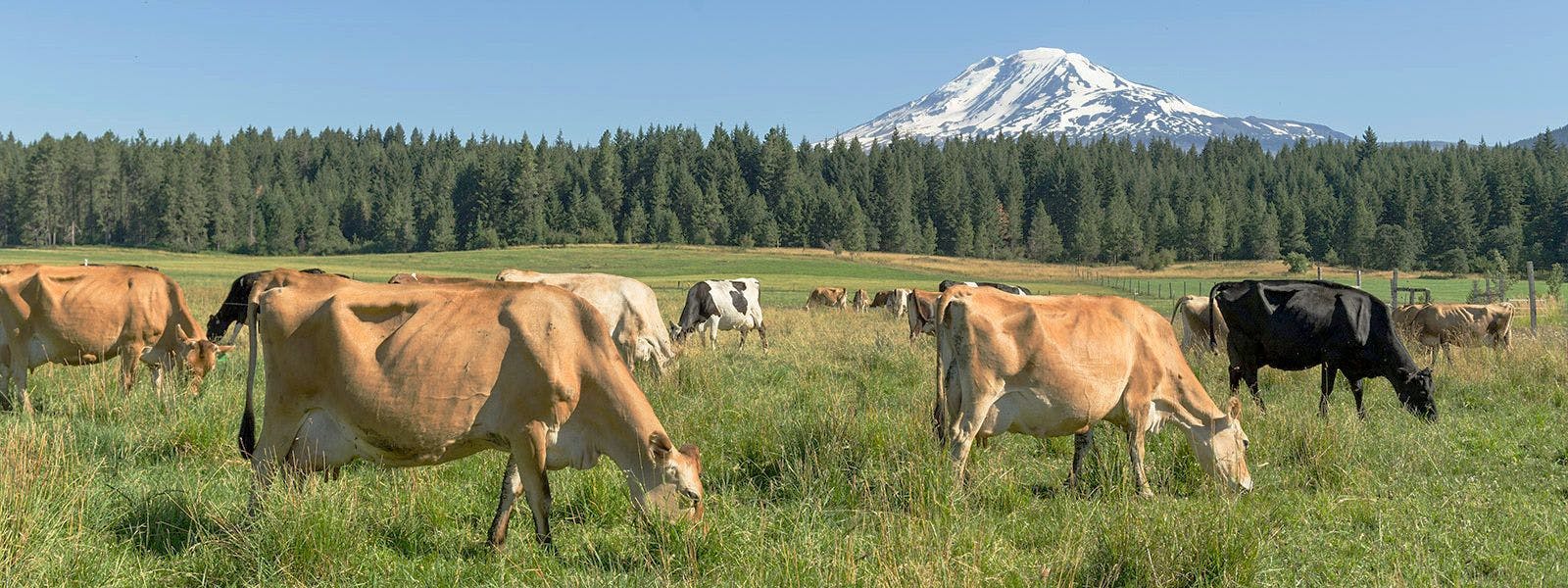
Farming
A Perfect Pairing of Cows and Pasture
The ideal picture of a pasture speckled with cows munching away at green shoots is a staple image in the dairy industry. Everyone loves the idea of cows free to roam the rolling hills. Organic Valley farmers get to see cows in action every day!
Cows love to be on pasture. They get to hang out with their besties, it's better for their feet than walking on concrete slabs, it provides nutrients, they get fresh air, and the greens taste great (at least to our bovine friends)!
Cows take in 50 to 55 pounds of dry matter (grain or dried forages) a day. Thousands of tiny microorganisms live in their stomachs to help digest food. This means that cows need to meet specific nutritional requirements to keep these microbes happy. Cows meet these requirements by eating diverse diets.
Organic Valley cows are all pasture-raised, which means they spend every possible day of the grazing season, well, grazing. The way dairy cows are raised at Organic Valley is different from how it’s done on confinement dairy farms, which provide the majority of milk in the United States. Cows on confinement farms are kept in large barns, and while they may eat dried forages like hay, those cows rarely, if ever, spend physical time on grass. The cows are fed more grains — typically genetically modified corn or soy — than cows on organic diets.
Check out these cows living it up on an Organic Valley farm in Wisconsin (we bet you will smile):
What is Pasture?
A pasture can be best described as a spring mix salad with a variety of greens. There are thousands of ways to mix it up, including planting legumes like alfalfa to sneak more nutrients into a cow’s meal.
Cows are also good at seeking out what they need. When they have cravings for minerals like salt, cows will even lick dirt to gain satisfaction. On good pasture, cows are fantastic at finding the nutrients that allow them to produce good milk.
Milk aside, being a cow on grass is a lifestyle. Organic certified cows are required to spend more than 120 days on pasture, but Organic Valley cows spend about 50% more time on grass than the requirement!
What Does Grass Do for Milk?
Milk production is an interesting process. Cows take in wholesome feed and convert it into milk filled with nutrients. The quality of a cow’s food determines the quality of a cow’s milk so it’s extremely important that cows receive only the best feed so that they can produce the best milk. So where does grass play a role in all of this?
Grass has amino acids, vitamins, and antioxidants that when consumed change the nutrients that will be passed into the cow’s milk. Better nutrients for cows mean better nutrients in their milk and better nutrients for you and your family!
What is Pasture Management?
There are two ways farmers manage their pastures.
Continuous pasture is when cows are put on one big pasture and have free range.
Intensive rotational pasture is the method most commonly used on Organic Valley farms. In intensive rotational pasture, land is divided into smaller sections, called “paddocks,” and cows are shifted from one to the next.
Moving cows around gives plants a break to regrow and reduces overgrazing. Another benefit of rotational grazing is manure is more evenly distributed and acts as a nutrient for soil. This style of grazing also means a change of scenery and fresh pasture for the cows!
In areas like Wisconsin, cows will graze from late spring to mid fall. Places like California may see year-round grazing depending on the average temperature and rainfall amounts.
Cows won't graze if the weather is too cold, but they may not want to go outside when it’s too hot! Because their stomachs use fermentation to break down food, they’re basically heaters themselves. Cows like to keep things between 25 and 65 degrees F. (Visit Do Cows Get Cold? for more.) So cool mornings and nights are sometimes the best time to put cows out on pasture.

Cows hang out on pasture at the Baese family farm in Michigan.
During the off season, cows get fed in their barns. For most organic cows, meals are a mix of fermented hay, corn, other grains, and legumes. Grass-fed cows will receive hay (dried grass) to stay on their special diet while waiting for the grass to grow. Now, this doesn’t mean cows don’t take trips to the pasture! During the winter, cows get out to pasture to stretch their legs. Just like kids on a snow day, they like to kick up snow and play around.
Pasture is Good for the Planet
Pasture is a living ecosystem that gives animals the nutrition they need to thrive, and good grazing practices on organic pastures help increase carbon sequestration (a method of reducing the amount of carbon dioxide in the atmosphere with the goal of reducing global climate change). Pasture also provides a habitat for insects, birds, and various plants.
As Ohio farmer Jeff Miller says, “Grass is the great healer for soil.”
Being on pasture has so many benefits, and we believe it is a right that all cows should have. Organic Valley farmers will continue to do what it takes to ensure the cows will always be free to roam the rolling hills!
"The pasture can’t grow as well without the cow; the cow can’t grow as well without the pasture. It’s just a natural fit."
- Kevin Mahalko , Organic Valley farmer
Related Articles
- Tags:
- animal care,
- environment,
- pasture & perennial agriculture
















